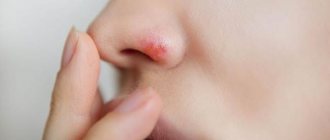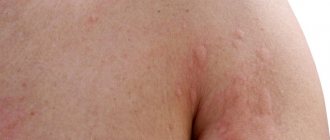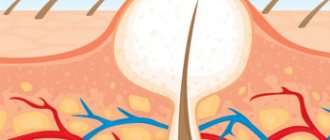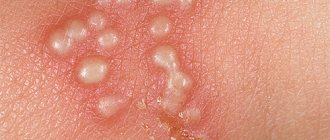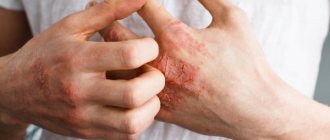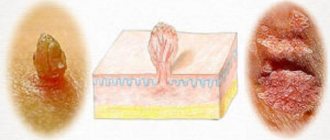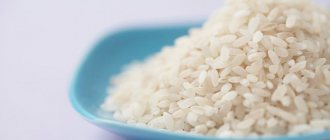What to do if your skin is burned with Dimexide
Dimexide or dimethyl sulfoxide is a well-known drug developed at the beginning of the 20th century. In general, it is a remedy exclusively for local use, often included in the treatment of diseases of the musculoskeletal system.
The main dosage form is a concentrate from which a solution for external use is prepared. Dimexide may cause a burn. It is classified as a complex chemical damage to the skin.
Organic sulfoxide does not exhibit uniform, pronounced properties that would allow the substance to be clearly assigned to a specific reaction group. It is both alkaline and reacts with metal hydrides or amides to form salts.
As part of first aid for a burn with Dimexide, the following actions are possible:
- Assess the extent of damage. If a chemical burn occupies a small area of the skin, and the contact with the substance was short-lived, then it is possible to carry out therapy at home.
If there are signs of moderate or severe pathology, you must immediately call an ambulance to the scene.The arriving doctors will consider the rationality of hospitalizing a person in a hospital;
- Remove all clothing that came into contact with the substance;
- Remove the bulk of the liquid using a dry cloth, cotton swab or other highly absorbent product;
- Rinse off any remaining product under strong pressure of cool running water;
- Apply a sterile gauze bandage to the skin.
Further home treatment is possible only with a clearly diagnosed mild form of a chemical burn. Local agents are used to reduce skin irritation and promote epithelial regeneration.
Treatment methods
Burns can be treated and skin restored in a hospital or at home. You should not limit yourself to home treatment; a child’s burn, even a mild one, should be examined by a doctor.
In the hospital
Upon admission to a medical facility, the doctor will assess the general condition of the patient and determine the degree of burn damage. If the stage of damage is serious enough, then the injury must be treated in a hospital. For these purposes, antiseptic solutions and irrigation with a mixture (furacilin and novocaine) are used. Then the area is dried and the rough crusts are removed.
If there are large bubbles filled with liquid, they need to be opened, small ones should not be touched. This is a preventive measure against infection of the wound. At the doctor's discretion, a bandage is applied or the affected area is left open. Human immunoglobulin is mandatory to be administered to prevent tetanus.
In case of surface rotting, daily procedures are carried out: dressings, treating the affected areas with anti-inflammatory medications. In urgent cases, when it comes to deep burns, surgical intervention is resorted to.
Not recommended actions for a burn wound
The most common mistakes when providing first aid after a burn with the drug:
- Treatment with products based on folk recipes. Sour cream, sunflower oil, fat and other homemade options for treating burns in this case can lead to a significant deterioration in the condition of the epithelium;
- Immediate use of wound healing drugs. Panthenol, miramistin and other medicines for any chemical burns are allowed to be used only after the end of the reactive phase of the pathological process. Otherwise, Dimexide, due to its properties, will provoke an uncontrolled reaction that can further damage the skin;
- Exclusively home treatment. The option of self-therapy is possible only for mild pathology, which is accompanied by slight redness of the skin on a small area of skin not exceeding 1-2 square centimeters. In all other cases, it is necessary to seek qualified medical assistance and outpatient or inpatient treatment.
Possible causes of burn formation
The main reason for the formation of a burn after using the drug is its chemical properties. This substance is able to penetrate all types of biological membranes and skin. After applying the solution, it is detected in the blood within 5-7 minutes and reaches its maximum concentration within 6 hours, and is excreted in feces and urine.
Another feature of the drug is the induction of the penetrating ability of a wide range of local and systemic drugs, which allows it to be used as part of complex therapy aimed at local delivery of almost any substance through the skin, bypassing the injection route.
The characteristics described above create the preconditions for potential negative reactions, including chemical burns. Pathology manifests itself under the following provoking circumstances:
- Long period of use. The use of a product that does not comply with the time frame for the duration of the procedure increases the risk of skin injury;
- Using a highly concentrated substance. Dimexide is supplied as a concentrated solution for dilution with water. If the drug is applied in its pure form, it is guaranteed to cause a wide range of pathological skin reactions - from allergic manifestations to moderate and even severe burns.
Recipes for masks for hair growth using dimexide
Since dimexide in cosmetology is sometimes used as a conductor for other beneficial substances, it can be added in small quantities to almost any mask.
Here are some of the simplest but most effective recipes for masks with dimexide:
Mask with dimexide to stimulate hair growth
To prepare the mask you will need 2 tsp. lemon juice and dimexide and 2 tsp. oil solutions of vitamins A and E. All these components are mixed and rubbed into the hair roots with intense movements.
The exposure time should be about an hour. Then the mask is washed off and the hair is washed with shampoo. The course of treatment lasts 2 months and consists of eight procedures.
Anti-hair loss mask with dimexide
You will need 1 tsp. castor and burdock oils, the same amount of oil solution of vitamin A and vitamin E, 1 tsp. dimexide and 4-5 drops of essential oil. All components are mixed, applied to the roots of the hair and left for half an hour, after covering the head with polyethylene. Then wash your hair with shampoo.
Mask for depleted and damaged hair
You need to mix 1 tbsp. l. oil solutions of vitamins A, B6 and E, burdock and castor oils with 1 tbsp. l. dimexide and with one yolk.
The resulting mixture is applied to dry, clean hair and wrapped with a towel. Keep on hair for 1-2 hours. If the hair is severely damaged, then it should be done once a week for 2-3 months.
Mask with dimexide for intensive hair growth
Required: 1 tbsp. l. dimexide and 3 tbsp. l. sea buckthorn oil. The oil is heated and mixed with dimexide. Apply the mixture to clean hair and wrap your head with a towel. After two hours, wash your hair thoroughly with shampoo.
How to properly use masks containing dimexide
Some tips for using masks containing dimexide:
- for the best effect, a hair mask with dimexide should be applied warm and for this, the oils contained in its composition must be heated;
- since dimexide is unstable to heat, it should be added only at the final stage of preparing the mask;
- During exposure to such masks, a slight tingling sensation is possible, which should not cause concern;
- When pre-washing your hair, you should not use hair rinse or conditioner;
- During the application of the mask, it must be constantly stirred, since the drug tends to separate from the oil base.
- After applying the mask, the head must be kept warm, and then the hair and head must be washed with shampoo, and this usually needs to be done several times to completely remove the oil from the hair.
Symptoms of skin damage from the drug
The symptoms of a skin burn with Dimexide are not specific, since the product itself belongs to an intermediate class of chemical substances that are conditionally dangerous to the epithelium and exhibits the properties of both alkali and acid in special cases. Possible primary symptoms:
- Severe itching and redness of the skin (a burn with Dimexide is shown in the photo);
- Formation of increasing pain syndrome;
- Hyperemia of the skin.
With the development of moderate and severe degrees of chemical burn after using Dimexide, the following signs are observed:
- The appearance of blisters with clear or serous contents;
- Formation of a scab with a loose internal structure or a dry hard crust;
- Systemic pathological reactions. Dizziness, weakness, changes in heart rate, blood pressure, dyspeptic disorders and so on. They are formed as a consequence of toxemia of the body, a response autoimmune process and other generalized problems, which in most cases require mandatory hospitalization of a person in a hospital and complex intensive care.
First aid
Dimexide burn, what to do. The rules for providing first aid are as follows.
- Remove any remaining concentrate by keeping the burn under cool (not cold!) water for 30 minutes. This will partially relieve pain, reduce swelling of the area and neutralize the effect of active substances.
- If it is impossible to keep the burn under water, make a compress from clean water (gauze moistened with water). It will need to be changed frequently, about once every 20 minutes.
- Remove decorations.
- Apply a sterile bandage, but not tightly.
- If burn symptoms worsen, consult a surgeon or call an ambulance.
It is forbidden the burn area with napkins, as the concentrate will only be more absorbed into the skin.
How to treat a burn with Dimexide
Treatment of skin burns after using Dimexide at home is possible only for mild forms of the pathological process that are not accompanied by partial destruction of the skin. In all other cases, outpatient or inpatient therapy is prescribed.
Medicines for burn injury
All drugs used in the treatment of chemical burns are divided into two large groups - the first are used in the reactive phase of the pathological process, while the second promotes the restoration and regeneration of the skin after the end of the acute period. At prehospital and primary hospital stages:
- Hydrogels. Necessary for first aid for any type of burn. They anesthetize the localization of the lesion, partially protect it from infection, and keep the epithelium in a moist, cool state. A typical representative is BurnAid;
- Local antiseptics. Necessary to reduce the risk of rapid development of secondary bacterial, fungal, and viral infections that actively penetrate the problem area of the burn due to a drop in local immunity. A typical representative is Miramistin;
- Steroid ointments. Used to reduce the intensity of the inflammatory process in the post-reactive phase of a chemical burn. A typical representative is prednisolone;
- Other medicines. With the development of sepsis, shock, and other acute pathological conditions, other medications can be used to eliminate symptoms and support basic vital signs. A specific list of them is prescribed exclusively by a combustiologist, dermatologist and other specialized specialists providing treatment in a burn department or intensive care unit.
After the end of the post-reactive phase, the rehabilitation stage begins. The most acute pathological manifestations of a chemical burn are absent; therefore, it is possible to use medications that restore the structure of the skin. Typical representatives are panthenol, chlorophyll substrate, olasol, and so on.
Traditional methods
Any traditional medicine recipes are prohibited from being used during the reactive and post-reactive phase of a chemical burn.
An acceptable area of their use is to complement complex drug therapy.
Treatment with folk remedies is possible at the stage of late rehabilitation and final restoration of the normal state of the epithelium, and only after mandatory consultation with the attending physician. Popular options:
- Starch. 3 tablespoons of potato starch are mixed with a small amount of water until a paste appears. This substance is applied to the burn as a lotion until it dries. The procedure is repeated 4 times a day. Duration of therapy – 1.5 weeks;
- Combination of oils. You should take flaxseed and lavender sea buckthorn oil in equal proportions, then mix them thoroughly and apply a thin layer to problem skin. The procedure is repeated 2 times a day. Duration of therapy – 1 week;
- Cabbage. A fresh leaf of white cabbage, previously softened by hand until the juice appears, is applied to the burn site several times a day.
Drug treatment
Attention: to coordinate drug treatment, it is better to consult a doctor (surgeon for 1-2, combustiologist for 3-4), he will take into account the individual characteristics of your body. If the burn is minor, you can treat it yourself at home.
- Treat the damaged area with Chlorhexidine aqueous and Furacilin antiseptics.
- “Miramistin” washes burns, protects the skin from pathogenic bacteria entering it and the onset of inflammatory processes.
- "Amprovisol" relieves pain, has a cooling and restorative effect.
- "Bepantel" and "Rescuer" protect against burn infection, relieve pain, eliminate burning sensations and prevent the development of suppuration.
- "Solcoseryl" helps restore damaged epithelium, increases the rate of wound healing, and improves cell metabolism.
If the injured area is large, it is recommended to use:
- "Levomycetin" is used for injuries of 2-3 degrees with a violation of the integrity of the epithelium. Has antibacterial and antiseptic effects
- Aerosol "Olazol" accelerates wound healing, removes inflammation, has an anesthetic effect and saves from pathogenic microorganisms.
To learn how to correctly and accurately use each of these medications, you must carefully read the instructions.
Possible consequences
Burns with Dimexide can have the following consequences:
- Formation of scars and contractures on the skin. Characteristic for severe degrees of chemical burns after healing of damaged tissues;
- Development of shock . A consequence of an allergic reaction or complex damage to large areas of skin;
- The appearance of burn toxemia and sepsis. Develop in the absence of any qualified pre-medical and medical care against the background of a severe form of pathology;
- Penetration of secondary bacterial , fungal or viral infections. A consequence of weakening local immunity in the problem area.
conclusions
Despite the apparent lightness and insignificance of the lesion, it is necessary to pay attention to it. It is important to provide correct, timely medical care, then undergo an examination by a specialist.
It is this sequence that minimizes the risk of scars on the skin and will speed up the healing process.
It is best to avoid burns; to do this, you should read the instructions more carefully and use the drug in appropriate proportions and concentrations. It is also worth noting that by not using a high concentration of dimexide, you will minimize the risk of such a situation and protect yourself.

